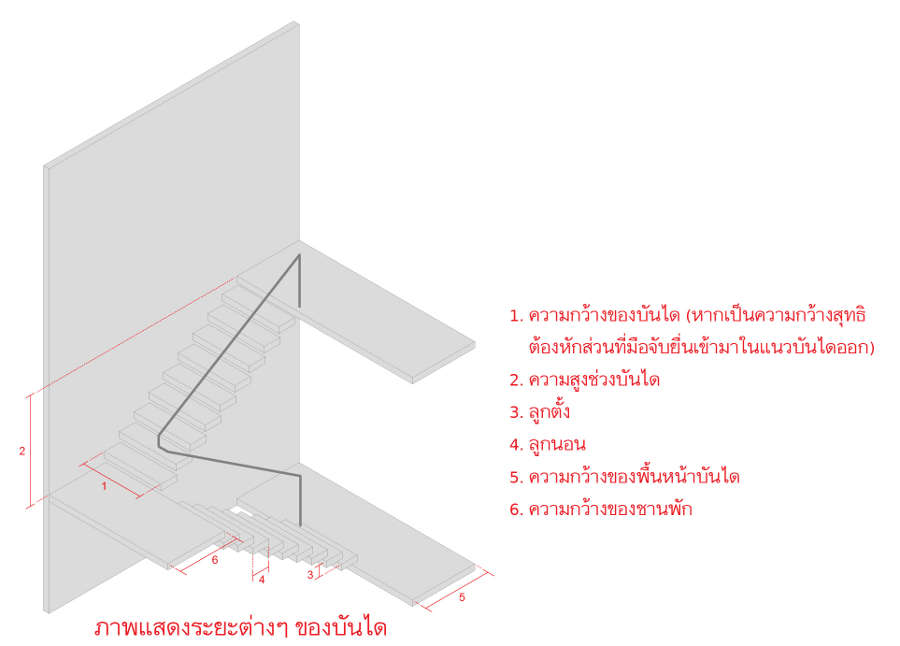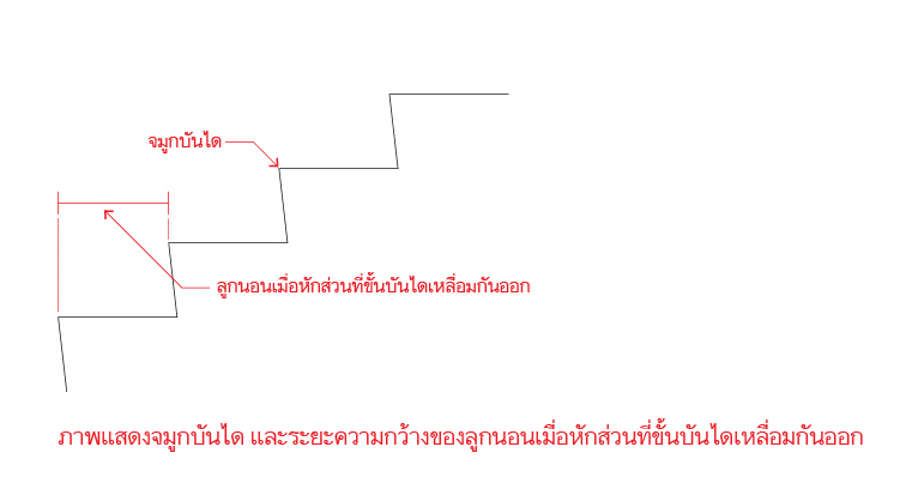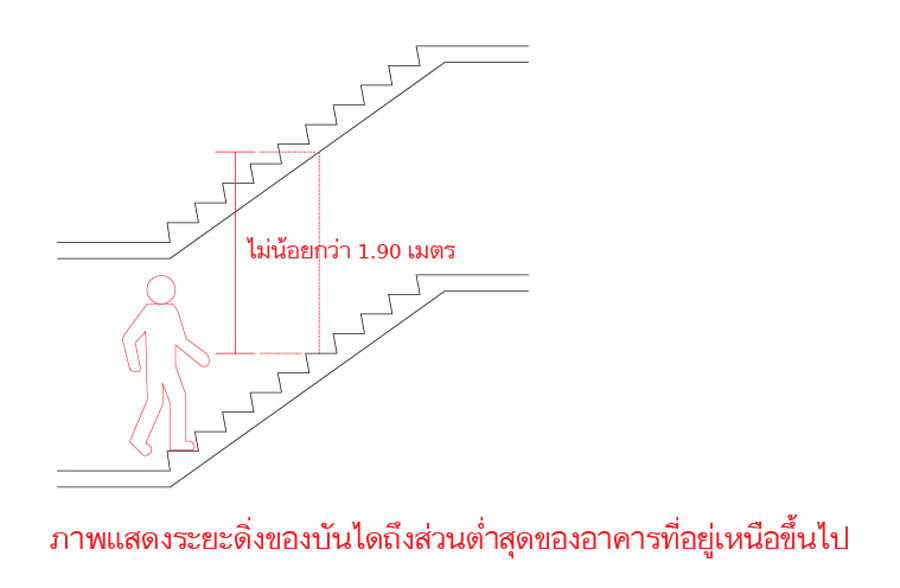I WANT
RELATED LINKS
I WANT
RELATED LINKS
RELATES LINKS
I WANT
RELATES LINKS
Services
Related Links
Use and Management of Cookies
We use cookies and other similar technologies on our website to enhance your browsing experience. For more information, please visit our Cookies Notice.
- Personal Banking
- Stories & Tips
- Home & Car
- Getting to know the stairways and safety tips
- Personal Banking
- ...
- Getting to know the stairways and safety tips
Getting to know the stairways and safety tips
10-04-2020
The stairway connects the corridor between each floor in the house. Because of the connection that is used to walk up and down, besides the beautiful design the safety is important to consider.
Many of you may not know that our country has a law on the stairs.
The law on stairs for houses is defined in the Ministerial Regulation No. 55 (BE 2543), Article 23, which stipulates stairs for residential buildings as follows.
"Stairs of residential buildings, if any there must be at least one ladder with a net width of not less than 80 centimeters. One span is not more than 3 meters. The riser is set no higher than 20 cm. The thread when the broken part of the staircase is overlapped and the width is not less than 22 centimeters.
Stairs that are higher than 3 meters must have a staircase every 3 meters or less. And the stairway must have a width and length not less than the width of the stairs. The distance from the stairs or the stairway to the lowest part of the building that is above must not be less than 1.90 meters “
See that the various stages as required by law Are intended for residents to use the stairs to walk up and down safely which can be expanded as follows
- The stairs must have a width to walk up and down easily, not less than 80 centimeters. It’s not too narrow. The net width refers to the width that does not include obstacles that lie to the stairs, such as the rails. If any house has more than 1 large person, then walk past each other without having to wait for another person to finish first. Should have a wider ladder than this. The width of the stairway also affects the possibility of carrying large items up and down. Therefore, before buying a large piece of furniture that is not removable to use on the upper floor. Do not forget to check the size of the stairs before buying them.
- A staircase must not exceed 3 meters in height. This means height from the ground level before the first step to the ground level of the next floor. So, don't have to walk up and down continuously too long. Which is set at a height of 3 meters. Think about when going up on a hill that has a stairway to walk up to hundreds of steps. There must be a resting place or pavilion to avoid having to walk up too long.
- Riser which is the distance between the steps. Which must not exceed 20 cm. In order to make the walking up not too difficult and walking down without feeling steep and dangerous. This is because the residents may be elderly or physically challenged as well.
- Thread or step when deducting the part of the overlap, the length must not be less than 22 centimeters. So that there is enough footstep and safety when stepping down each step and walking up and down without difficulty.
- The front of the stairs must have width and length not less than the width of the stairs. So that those who walk up and down can have a resting spot at the destination and before walking down, there is enough space for preparing to step down easily.
- If each floor in the house has a different height of more than 3 meters, there must be a terrace to prevent the stairs from being over 1 meter in height. And the resting space must have a width and length not less than the width of the stairs
- The resident must be able to walk up and down, with each step his head must not collide with any part of the house above. By law, the height of this area is not less than 1.90 meters, but if the house has a person who is much taller than this standard. May have to consider this issue by himself.


Moreover, there are other components that will help increase the safety of the stairs
1. Handrail: It is important for the stairs . The handrail should have a shape and size that is easy to handle, based on strong structure and in the height that is convenient to catch while up and down. A staircase with a single handrail and has a non-continuous handlebar, would make walking up and down difficult. Especially those who are elderly or disabled.
2. Nosing: Is the part that extends from the tip of the thread which usually protrudes about 1 inch. Which will help increase the foot space and is generally covered with a non-slip or grooving material that will prevent accident and helps users to notice each step more easily

4. Riser: usually those who walk up and down the stairs always step up or down equally in every step. Therefore, having a set of risers at the same height is very important in safety. The unequal set may be caused by problems with construction craftsmen or customization augmented by those without knowledge.
5. Thread: like the riser, the thread should have the same width. In response to the walking behavior of stairs users.
6. Sufficient lighting: the stairs can be placed in various positions of the house, according to the layout and design guidelines. But must consider the lighting used to facilitate walking up and down the stairs. Which can be both light from the lamp or natural light received from glass windows that are usually located near the stairs. A staircase with solid walls covering both sides may require risers that is transparent, which means it has only threads. To receive light from nearby areas Which depend on the design guidelines
All these issues, both as required by law or not. They are a checklist for homeowners to consider for safety. As for any homeowner who is designing a new house or buy a new home from various developers, may not have to worry much because the house designed by the architect will have a safe staircase design and already according to the law.
